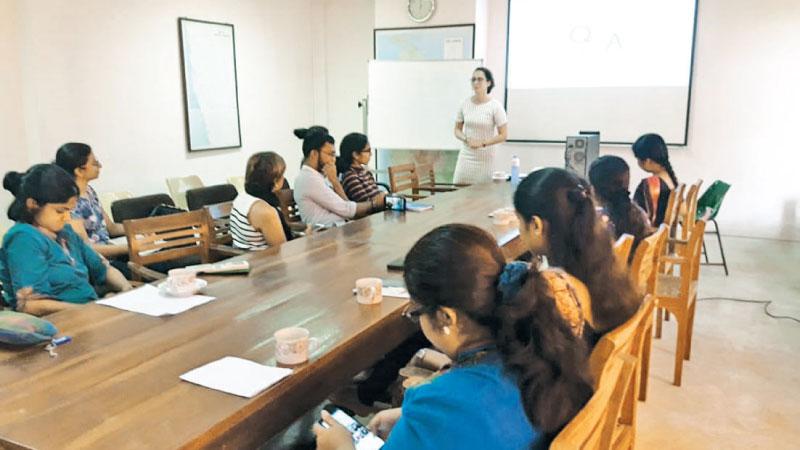
The word ‘Art’ simply brings a sense of survival and escapism to the mind. Living within a conflict affected era. Sri Lanka demands the type of Art that can heal the broken edges and can contribute to peace and reconciliation. Culminating a year-long project funded by the British Council in Sri Lanka, Arts and Reconciliation held a seminar recently at the Open University. Parakrama Niriella a well-known artistic personality was present at the seminar to discuss Artistic Freedom, Censorship, and the role Art plays towards peace-building in post-war Sri Lanka.
As the discussion prolonged, it emphasised the fact that ‘Literature’ in ancient times, had been a part of ‘Aristocracy’ that the artists maintained during the reign of the kings. The focus of the discussion was particularly both Sinhala and English ‘Theatre’. “Within education, the aesthetic arts have become mere subjects, studied only to pass examinations. There is no true engagement with art or culture today” said Parakrama Niriella. The objective of the seminar was to instill enthusiasm and passion in the hearts of people and to make them embrace Theatre and Arts with meaning.
For Arts to make a positive impact in society, it has to have freedom to burst out in its proper shades. As Mao Tsc Tung said -”let a thousand flowers bloom”
For example, if an artist is evoked by some creative thought regarding a contemporary issue such as Racism, he has to have freedom to express himself without striving to be biased or influenced by any outside force. In the Sri Lankan context, the artists are stuck within a certain frame with the State and structural constraints and social and ideological constraints such as Nationalism.
Particularly in the past, Art was not considered a prestigious activity and the usual artist was been one of the lower casts. ‘Religious Conservatism’ was mentioned as one such constraint that hinders the vision of an artist. ‘Sensitivity to the contemporary issues’ and ‘self-censoring’ were spotlighted as knacks and ethics an artist can possess. Also, the position of the audience was questioned in terms of their support for artists.
According to Parakrama Niriella, the future for theatre is very challenging. But the capacity of any art form to thrive lies in how successfully it can blend in with the changing realities.
So, he depicted the importance of adaptability over sticking to conventional notions of Art and the primacy of engaging Art with people’s real lives.
Theatre is a powerful medium with which to approach Youth. Offer them good sense and orientation in life.
The enrichment which youth get through education, media and general social discourse was seen as ‘not sufficient’. In a society like Sri Lanka, theatre is depicted as a platform where the unheard social issues are offered a chance to make their voices heard.
In general, the role of an artist is brought out in a broader sense. It’s as simple as listening and interpreting the situation. One needs a facilitator to performe and document the potential to mend the traumatised hearts and minds across the social and cultural fences.
The most vital assets an artist should have are an artistic approach so as to be effective. His or her curiosity to be conscious of the context, be all ears, be inclusive and be prepared to respond to the needs of concerned parties.
